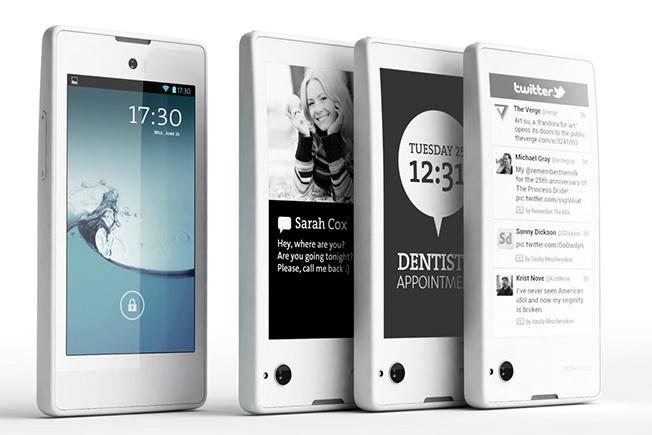
The YotaPhone turned some heads when it was unveiled late last year, as it was the first smartphone to incorporate not one but two displays – a regular high-definition screen on one side and on the opposite a Kindle-like E-ink display.
Although it’s been turning up at various tech shows in the last 12 months, official word on a release date for the innovative device hasn’t been forthcoming – until now, that is.
Yota Devices, the Russian company behind the handset, told TechCrunch Wednesday the YotaPhone will launch internationally next month, “before Christmas”.
Its maker is yet to announce pricing for the 4.3-inch Android device, though reports in September suggested it could come with a €500 ($673) price tag.

The idea is to use it as a kind of quick-access notification center where you can find information on anything from the time to new messages to social media updates to missed calls. And if you’re big into e-books or text-heavy sites, the easier-on-the-eye E-ink display is going to come in very handy, while the high-resolution screen stays useful for viewing photos and video, playing games, and so on.
Of course, the fact that an E-ink screen drains a battery at a far, far slower rate compared to a regular high-definition display could make the YotaPhone a very attractive proposition for some consumers.
DT’s Andy Boxall managed to get his hands on the YotaPhone at Mobile World Congress back in March, and while impressed by its unusual design, it has to be said he wasn’t entirely convinced of its overall benefits. You can read more about his experience with the handset here.
Editors' Recommendations
- Android phones finally have their own version of AirTags
- How to fix screen burn on your iPhone or Android phone
- How to track an Android phone (or other device)
- This forgotten Android phone did something incredible 4 years ago
- Motorola just launched 3 new Android phones, and they look incredible


